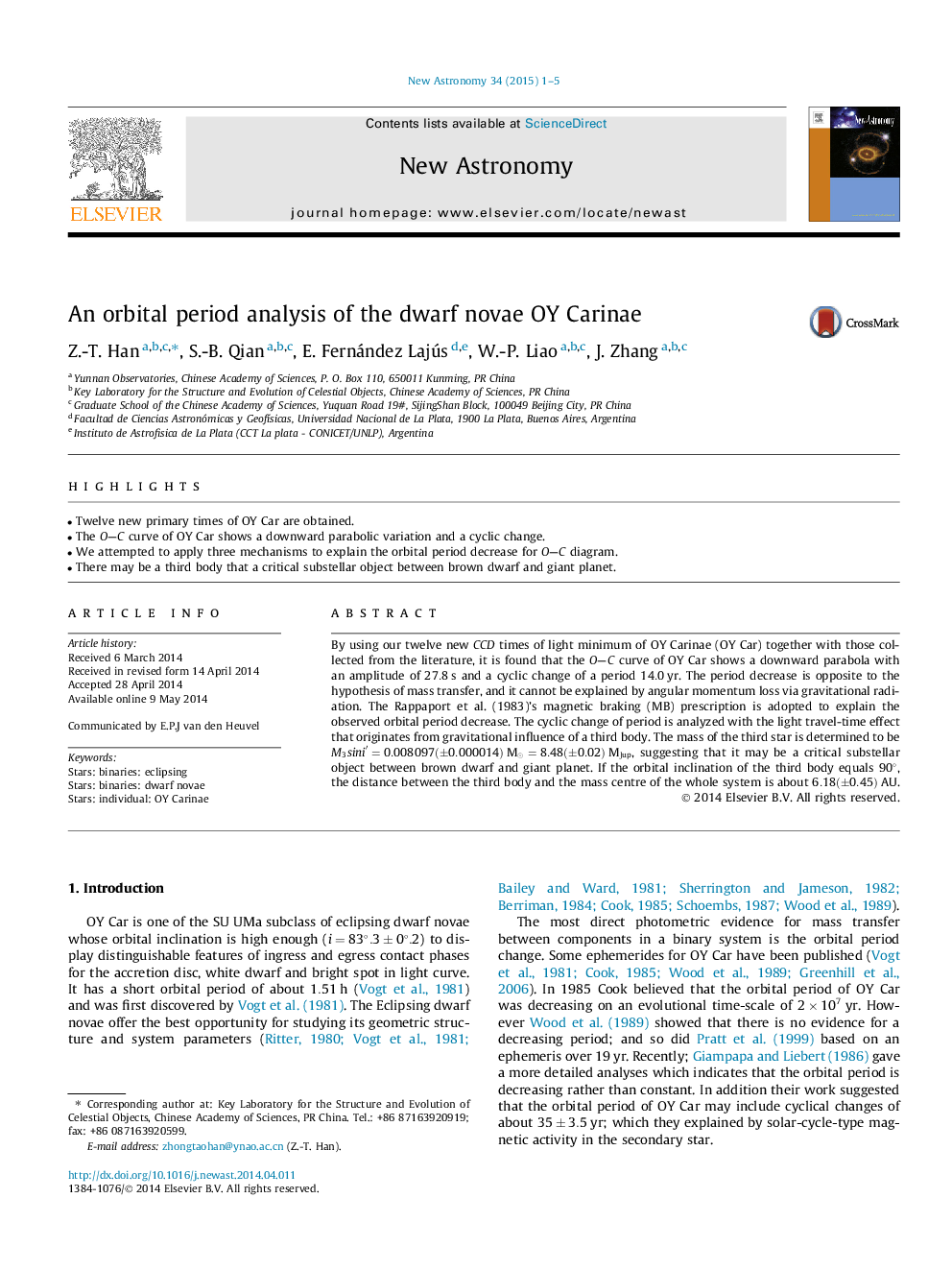| Article ID | Journal | Published Year | Pages | File Type |
|---|---|---|---|---|
| 1778951 | New Astronomy | 2015 | 5 Pages |
•Twelve new primary times of OY Car are obtained.•The O–CO–C curve of OY Car shows a downward parabolic variation and a cyclic change.•We attempted to apply three mechanisms to explain the orbital period decrease for O–CO–C diagram.•There may be a third body that a critical substellar object between brown dwarf and giant planet.
By using our twelve new CCD times of light minimum of OY Carinae (OY Car) together with those collected from the literature, it is found that the O–CO–C curve of OY Car shows a downward parabola with an amplitude of 27.827.8 s and a cyclic change of a period 14.014.0 yr. The period decrease is opposite to the hypothesis of mass transfer, and it cannot be explained by angular momentum loss via gravitational radiation. The Rappaport et al. (1983)’s magnetic braking (MB) prescription is adopted to explain the observed orbital period decrease. The cyclic change of period is analyzed with the light travel-time effect that originates from gravitational influence of a third body. The mass of the third star is determined to be M3sini′=0.008097(±0.000014)M⊙=8.48(±0.02)MJup, suggesting that it may be a critical substellar object between brown dwarf and giant planet. If the orbital inclination of the third body equals 90°90°, the distance between the third body and the mass centre of the whole system is about 6.18(±0.45)6.18(±0.45) AU.
